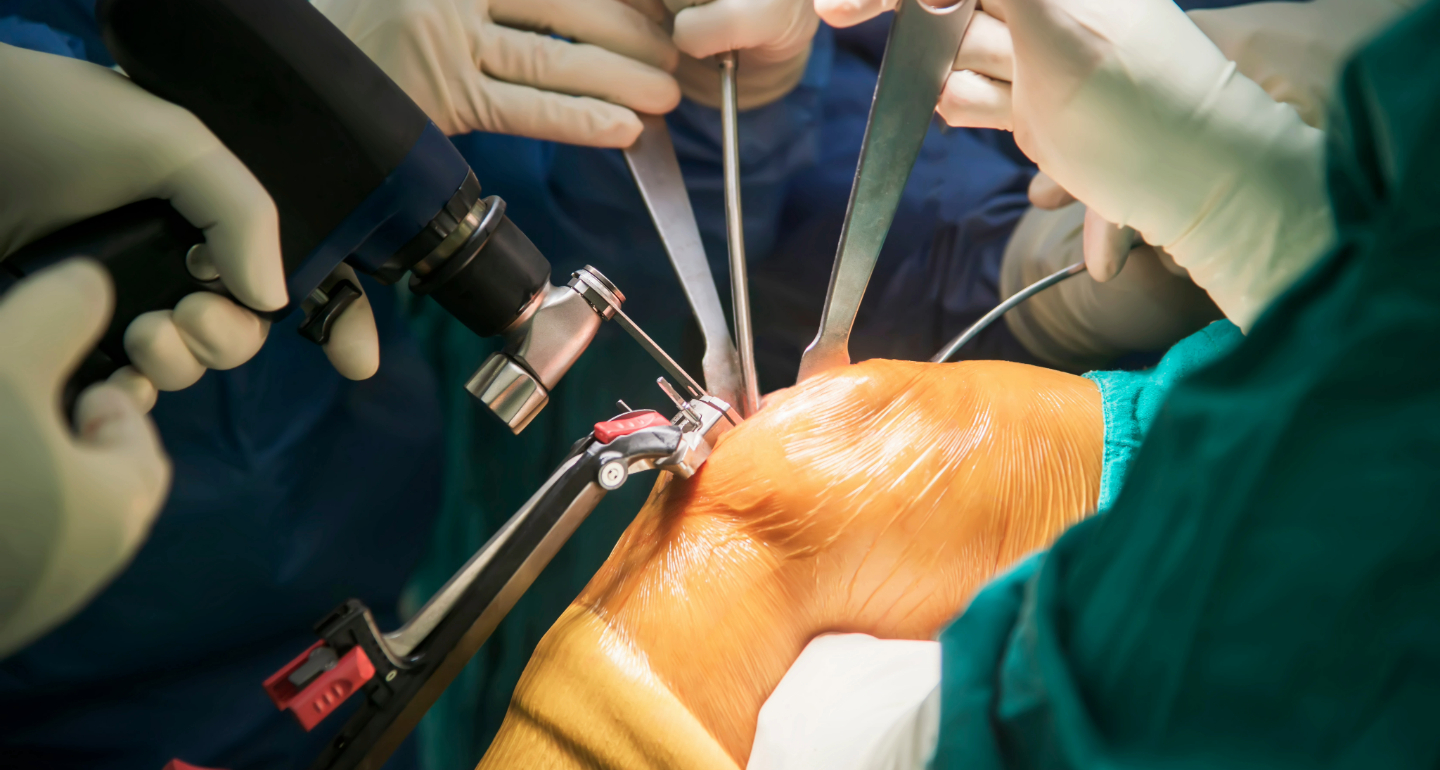Medical Devices
Patient Outcomes: Traditional vs. Robotic Knee Replacements

Knee pain can be a constant struggle, making it difficult for people to enjoy their daily activities. When medication and therapy aren't enough, knee replacement surgery becomes a necessary option. But did you know there's more than one way to approach this surgery? Traditional knee replacement has been a standard method for years, while the newer robotic-assisted knee replacement offers a high-tech alternative. Curious about how these two methods compare? Read on to learn more.
What is a Knee Replacement?[1]
Also known as knee arthroplasty, it involves replacing the damaged parts of the knee joint with artificial components. This procedure is typically recommended for patients who have not found relief through treatments like medications, physical therapy, or injections.
Traditional Knee Replacement Surgery[2]
Traditional knee replacement surgery has been the standard method for many years. In the procedure, the damaged cartilage and bone from the knee joint are removed and replaced with metal and plastic prosthetic components.
Steps Involved in Traditional Knee Replacement[2]
Incision: The surgeon makes an incision over the knee to access the joint.
Preparation: The damaged cartilage and bone are removed from the surface of the knee joint.
Implantation: Metal and plastic components are positioned to restore the alignment and function of the knee.
Closure: The incision is closed, and the knee is bandaged.
Tools and Techniques Used in Traditional Knee Replacement Surgery
Traditional knee replacement relies on manual techniques and the surgeon expertise to align and fit the prosthetic components. Standard surgical instruments and jigs are used to guide bone cuts and implant placement.
Advantages of Traditional Knee Replacements
Wide Availability: Traditional knee replacement surgery is widely available and well-established.
Familiarity Among Orthopedic Surgeons: Many orthopedic surgeons have extensive experience and expertise in performing this procedure.
Robotic-Assisted Knee Replacement Surgery[3]
Robotic-assisted knee replacement surgery utilises a robotic system to assist the surgeon in performing precise bone cuts and implant positioning. This technology enhances the accuracy of the procedure, potentially leading to better patient outcomes.
Steps Involved in Robotic Knee Replacement[3]
Preoperative Planning: A CT scan of the patient's knee is taken to create a 3D model, allowing for personalised surgical planning.
Incision: Similar to traditional surgery, an incision is made over the knee.
Bone Preparation: The robotic system assists the surgeon in making precise bone cuts based on the preoperative plan.
Implantation: Prosthetic components are placed with the assistance of the robotic system, ensuring optimal alignment and fit.
Closure: The incision is closed, and the knee is bandaged.
Technology and Tools Used in Robotic Knee Replacement[4]
Robotic-assisted surgery uses robotic arm, computer navigation, and imaging technology. These tools provide real-time feedback and allow for precise adjustments during the procedure.
Difference Between Traditional vs. Robotic Knee Replacement Surgeries[3]
Precision and Accuracy in Traditional vs. Robotic Surgery: Robotic-assisted knee replacement offers superior precision and accuracy compared to traditional methods. The robotic system enables more exact bone cuts and implant positioning, reducing the risk of human error.
Impact on Soft Tissue Handling and Bone Cutting: Robotic systems are designed to minimise soft tissue damage by allowing for more controlled and targeted movements. This can lead to less postoperative pain and faster recovery.
Recovery Time and Return to Normal Activities: Patients undergoing robotic-assisted knee replacement often experience shorter recovery times and quicker returns to normal activities. The enhanced precision of the robotic system contributes to better alignment and stability, promoting faster rehabilitation.
Advantages of Robotic Knee Replacements[3]
Enhanced Precision and Customisation: The robotic system's ability to create a personalised surgical plan ensures that each patient's unique anatomy is considered, leading to improved outcomes.
Potential for Less Damage and Improved Alignment: With the robotic system, surgeons can make more precise bone cuts, reducing the risk of soft tissue damage and ensuring better implant alignment.
Reduced Risk of Complications and Revision Surgeries: The increased accuracy of robotic-assisted surgery lowers the possibility of complications and the need for revision surgeries, providing patients with a more reliable long-term solution.
Shorter Hospital Stays and Faster Recovery: Patients who undergo robotic-assisted knee replacement typically benefit from shorter hospital stays and quicker recovery periods due to the minimally invasive nature of the procedure.
Factors Influencing the Choice Between Traditional and Robotic Knee Replacements
Here are some key factors to consider:
Patient's Overall Health:
- Pre-existing medical conditions
- Overall physical fitness
- Ability to withstand surgery and recovery
Activity Level:
- Level of physical activity pre-surgery
- Post-surgery mobility goals
- Lifestyle requirements and expectations
Age:
- Younger patients might benefit more from the precision and longer-lasting outcomes of robotic surgery
- Older patients may prefer traditional surgery due to its established track record
Body Mass Index (BMI):
- Higher BMI may affect surgical outcomes and recovery
- Surgeons may recommend a specific approach based on the patient's BMI
Bone Quality:
- The condition of the patient's bone can affect the choice of surgical method
- Osteoporosis or other bone conditions may influence the decision
Personal Preferences:
- Comfort with traditional versus high-tech surgical options
- Desire for a minimally invasive procedure
- Preference for a quicker recovery process
Insurance Coverage:
- Availability of coverage for robotic-assisted surgery
- Out-of-pocket costs for different procedures
Hospital Facilities:
- Availability of robotic systems at the healthcare facility
- Access to advanced surgical technology and postoperative care
Expected Recovery Time:
- Robotic surgery may offer shorter recovery times
- Patient's ability to commit to rehabilitation and physical therapy
Risk of Complications:
- Robotic surgery may reduce the risk of certain complications
- Assessment of individual risk factors for surgical complications
Long-term Outcomes:
- Expected longevity and durability of the prosthetic components
- Potential for revision surgeries in the future
MISSO® by Meril
MISSO® Robotic System by Meril is an advanced orthopedic technology for primary knee replacements. It integrates CT scan-based preoperative planning for high precision in bone resections and implant placements. Key features include sub-millimeter precision, personalised surgical plans, real-time intra-operative metrics, and safety features like bone movement monitoring. Compatible with Freedom, Destiknee, and Opulent knee implants, MISSO® aims to improve patient outcomes with quicker recovery and improved results.
Conclusion
Choosing between traditional and robotic knee replacements depends on various factors. While traditional knee replacement surgery remains a reliable and widely practised method, the introduction of robotic systems offers enhanced precision, reduced recovery times, and potentially better outcomes. Patients are recommended to consult with their healthcare providers to understand the most suitable option for their needs.
References:
[1] https://www.mayoclinic.org/tests-procedures/knee-replacement/about/pac-20385276
[2] https://orthoinfo.aaos.org/en/treatment/minimally-invasive-total-knee-replacement/#:~:text=To%20perform%20a%20traditional%20knee,small%20amount%20of%20underlying%20bone.
[3] https://www.pennmedicine.org/for-patients-and-visitors/find-a-program-or-service/orthopaedics/knee-pain/knee-surgery/knee-replacement-surgery/robotic-knee-replacements
[4] https://www.merillife.com/blog/medtech/revolutionizing-knee-replacement-surgery-the-rise-of-robotic-technology





